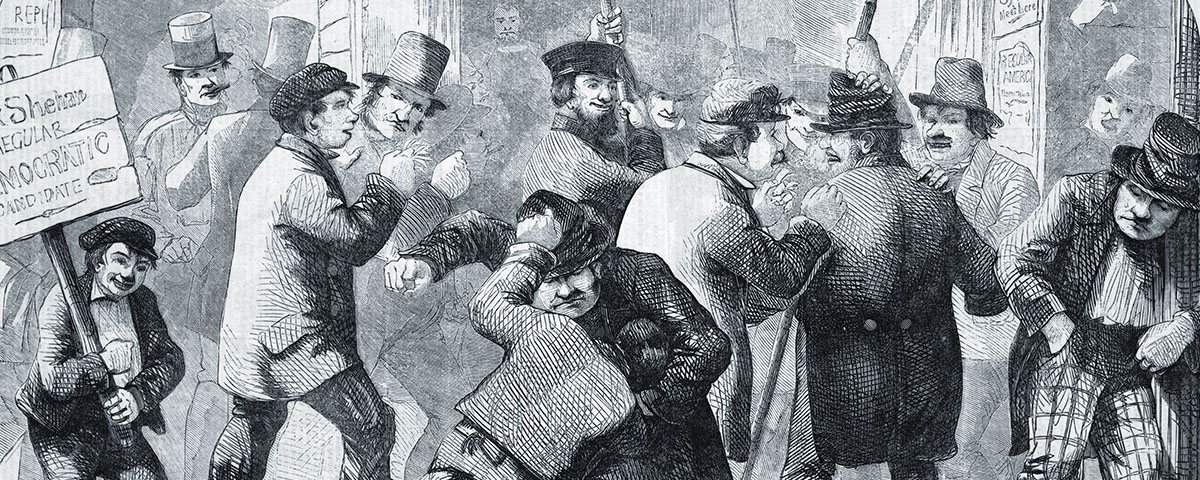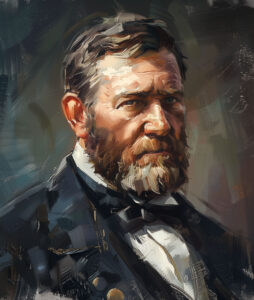The homestretch of the 2016 election resounded with Donald Trump’s charge that the whole thing was fixed—“absolutely being rigged,” as the candidate put it, on Twitter and in person. By this, Trump meant that mainstream media was against him—not hard to demonstrate. But Trump also meant that he would suffer from fraud at the polls. Asked during the third debate if he would accept the election result, Trump answered that he would “keep you”—that is, everyone—“in suspense.” The next day, Trump added that he would accept “a clear election result,” especially if he were the winner. Trump’s remarks were “horrifying,” Hillary Clinton said. “He’s talking down our democracy.”
In its 240 years, our democracy has survived many problems, including being talked down by sore losers. Rigged elections, and fear of them, are a part of that long story. One way to rig an election is to flood it with dead or otherwise bogus voters. After the 1960 Kennedy/Nixon cliffhanger, Republicans suspected vote-thieving in Texas and Illinois. Texas refused to re-examine its count. Illinois, which did, found false votes—mainly in Chicago, but not enough to affect the result. Ironically, the only state that switched its 1960 vote after a recount was Hawaii, which went from Nixon’s column to Kennedy’s.
Intimidation and violence are the most thuggish forms of rigging. Threaten or kill enough would-be voters, and others will stay home—the Republican Party’s fate in the post-bellum South. A morning-after deal also can deflect the people’s will. Andrew Jackson won the most states and votes in 1824, but because he fell short of a majority in the Electoral College, the election went to the House of Representatives. There, Henry Clay threw his support to John Quincy Adams—who, in gratitude, made Clay Secretary of State. Jackson supporters spent the next four years denouncing the corrupt bargain—though had Clay backed their man, and become Secretary of State, they doubtless would have approved.
Another way to rig is to throw out votes after they have been cast. This method decided a 1792 gubernatorial contest between founding fathers George Clinton and John Jay.
George Clinton was a natural politician. A son of Irish Protestant immigrants, Clinton won New York’s first post-independence election for governor in 1777. New York governors then served three years, and Clinton kept accumulating terms, earning the nickname “The Old Incumbent.” In 1788, Clinton opposed the Constitution, presiding over a state ratifying convention packed with antis. After nine states ratified, however, the convention—and Clinton—went along with the new order.
John Jay got important things done, often behind the scenes. During the Revolution, he served as a spymaster and a diplomat, helping to negotiate the Treaty of Paris. Unlike Clinton, Jay, in his quiet way, backed the Constitution. At the New York ratifying convention, while Alexander Hamilton was giving passionate pro-Constitution speeches, Jay was mending fences and offering deals. In 1789, President Washington tapped Jay to be the first Chief Justice of the Supreme Court.
Jay had a tart streak; when an accident cost lecherous friend Gouverneur Morris a leg, Jay wrote Morris might better have lost “something else.” Experience had etched Jay’s face with sadness. Two of his siblings were blind, and a third insane; Jay looked after all three.
In 1792, the two New Yorkers personified the nation’s new two-party system, Clinton allied with Thomas Jefferson, James Madison, and the Republicans; Jay with Washington, Hamilton, and the Federalists. Jay welcomed the chance at a new job, since the Supreme Court in those days involved less prestige than hard work. Justices doubled as circuit court judges, riding hundreds of miles on execrable roads.
New York election law directed that each county’s sheriff seal the ballots and send them to a board of 12 canvassers—half chosen by the state senate, half by the assembly—that then met to count the ballots and declare the winner.
The Republicans stole a march by packing the board. Federalists thought they had a deal for the parties to split membership evenly. The senate picked three Republicans and three Federalists. However, the assembly, in what a Federalist called “a damned maneuver,” picked six Republicans. Advantage Clinton.
Republicans then noticed that the frontier county of Otsego had racked up a relatively huge margin—400 votes—for Jay. This was the work of local grandee William Cooper, a self-made developer and promoter who founded and named Cooperstown. Cooper literally had grabbed townsmen, led them to the polls, and insisted they vote Federalist. Strong-arm tactics were common among New York’s one percent: Republican Robert Livingston, a super-wealthy Hudson Valley aristocrat, was said to drive his tenants to the polls like “sheep to slaughter.” But Cooper’s tactics seemed over the top, even in 18th century New York.
Cooper also was careless. Otsego County Sheriff Richard Smith’s term had expired three months before the election. Because Smith’s successor had not taken office, it was Smith who sent the Otsego ballots to the board. But if Smith had acted improperly, were the votes valid?
Canvassers argued among themselves, then wrote to Philadelphia, the nation’s capital, for advice from New York’s United States Senators. Aaron Burr hewed to the letter of the law, maintaining that since Smith was no longer sheriff, ballots from Otsego had not been legally delivered. Rufus King, holding that the election laws were made to serve voters, said votes cast legally should not be suppressed owing to post-facto technicalities. Burr was a Republican and King a Federalist, so each stuck by his party. But King, as even Burr biographer Milton Lomask admits, “took the high road.” The board of canvassers took the low road, refusing to count the Otsego ballots and for good measure burning them and declaring Clinton the winner by a statewide margin of 108 votes.
The result prompted brawls in Albany and Kingston and a duel in New York City. Notably missing from the post-election uproar was John Jay. Jay learned of his defeat while riding circuit in New England. “The reflection that the majority of electors was for me is a pleasing one,” Jay wrote his wife. “That injustice has taken place does not surprise me.” Amazingly, the outcome did not bother him, either. “A few more years will put us all in the dust, and it will then be of more importance to me to have governed myself than to have governed the state.”
Jay got his chance to govern New York in 1795 by beating a new Republican, Robert Yates, by a margin too large to have it rigged out of his grasp. Jay served until 1801, when he retired from politics. In his now-copious spare time, Jay told tales of espionage to William Cooper’s son James Fenimore, who turned those recollections into his first best seller, The Spy. George Clinton, who would as soon stop politicking as breathing, won a seventh term as governor, followed by two terms as vice president, dying in office. Each man had his reward.
Vote rigging of any kind is a serious crime, undermining democracy’s very foundation. But it is good sometimes to remember what John Jay knew, that politics isn’t everything.





